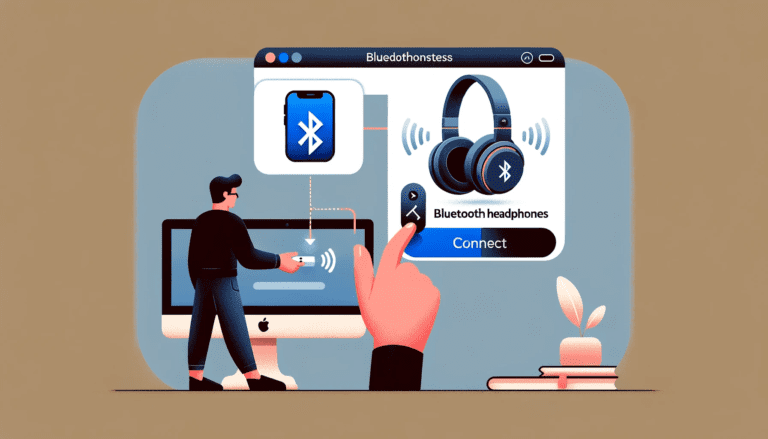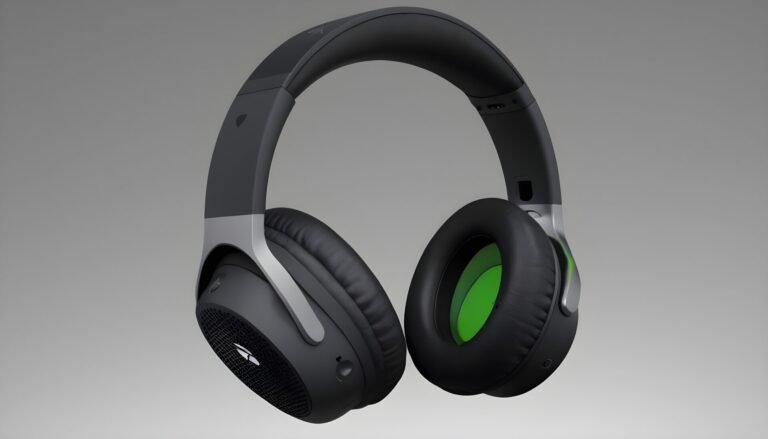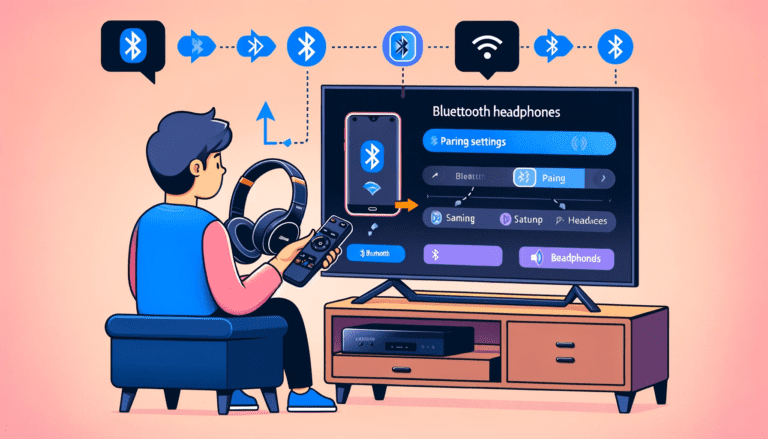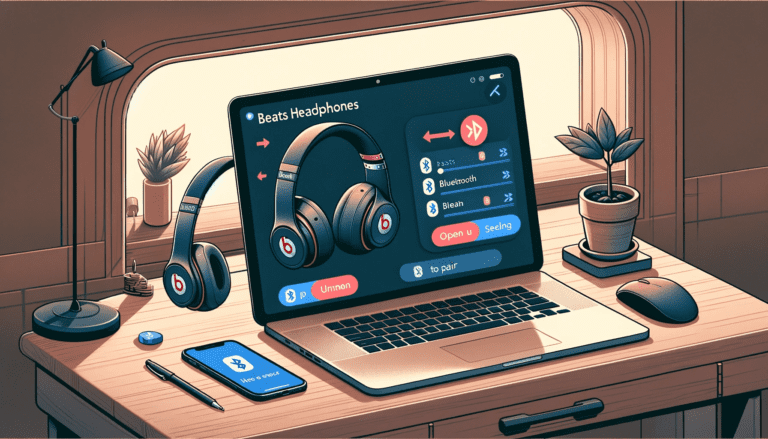The concern of headphones causing permanent dents in the head is a topic that’s been floating around among regular users and audiophiles alike. It’s a worrisome thought: could your favorite pair of cans actually leave a lasting mark?
Many people report noticing indentations after extended wear, but the question remains—can these effects be permanent?
In this article, we explore the reality behind headphone-induced dents, separating fact from fiction. We’ll explore the anatomy of the scalp, the impact prolonged headphone use can have, and what, if any, long-term effects you should genuinely be concerned about.
Whether you’re a music enthusiast, a gaming aficionado, or someone who relies on headphones for work, this guide will provide you with essential insights to ensure your listening habits don’t leave a lasting impression on your head.
Key Takeaways
- Headphone dents are typically temporary indentations in the hair or skin, not actual dents in the skull, and usually resolve within a few hours after removing the headphones.
- While generally not a health concern, persistent indentations accompanied by symptoms like pain or swelling should prompt medical consultation.
- Preventative measures such as wearing hats or adjusting the headband can mitigate pressure and prevent discomfort.
- The ‘Gamer Dent’ has become a cultural phenomenon within online communities, often associated with heavy and prolonged headphone use.
- Wearing headphones over accessories like beanies requires consideration of fit and sound quality to avoid damaging the headphones or compromising comfort.
Understanding the Phenomenon of Headphone Dents
The Anatomy of a Headphone Dent
The term ‘headphone dent’ often conjures images of permanent skull deformations, but the reality is far less alarming. The phenomenon typically involves a more temporary dent or indentation in the hair or skin, caused by the sustained pressure of headphone bands or ear cups. This common occurrence is usually not a cause for concern and resolves itself within a few hours after the headphones are removed.
For the vast majority, a headphone-induced head dent is a temporary and purely cosmetic issue, with no lasting impact on health or cranial structure. However, it’s important to note that if an indentation is accompanied by symptoms such as pain, swelling, and redness, or does not resolve after a reasonable time, it could indicate a more serious condition unrelated to headphone use. In such cases, seeking medical attention is advisable.
While the ‘Gamer Dent’ has become a cultural talking point, it’s essential to distinguish between internet lore and the actual science behind these indentations. The narrative surrounding personalities like Tyler1 has brought attention to the issue, but it remains primarily a topic of curiosity and humor rather than a medical concern.
Distinguishing Between Myths and Facts
In the realm of personal audio, the idea that prolonged headphone use can lead to permanent indentations on the top of your head has sparked a mix of concern and skepticism. The truth is that the human skull is quite resilient, and while temporary marks or impressions may occur, they typically resolve with time once the pressure is removed.
To clarify the confusion, let’s examine some common beliefs:
- Myth: Headphones can reshape the skull.
Fact: The skull’s bone structure is not easily altered by the pressure from headphones. - Myth: Indentations from headphones are always permanent.
Fact: Most indentations are temporary and fade after a short period. - Myth: Only tight-fitting headphones can cause dents.
Fact: Any headwear that exerts pressure can leave temporary marks, but proper fit and design can mitigate this.
It’s essential to approach such claims with a critical eye and understand that sensational headlines like ‘Can Headphones REALLY cause a Dent in Your Head? Shocking Truth!’ often lacks scientific backing. In summary, the myths around headphone-induced dents in the head are largely unfounded and result from speculation or fear.
The Role of Headphone Design in Pressure Distribution
The design ear shape of headphones plays a crucial role in how pressure is distributed across the wearer’s head. Headphones with a well-engineered headband can mitigate the risk of developing indentations by evenly spreading the force over a larger area, rather than concentrating it at specific points. This is particularly important for users who wear headphones for extended periods.
To understand the impact of headphone design on pressure distribution, consider the following factors:
- Headband padding: Cushioning can absorb some of the pressure, reducing the likelihood of dents.
- Adjustability: A headband that can be adjusted for tightness helps in finding a comfortable fit that minimizes pressure.
- Weight: Heavier headphones can exert more pressure, making lightweight designs preferable for long-term use.
For those concerned about the potential for headphone-induced discomfort or the dreaded \
Assessing the Risks of Prolonged Headphone Use
Temporary Discomfort vs. Permanent Damage
The concern that prolonged headphone use could lead to permanent dents on the head is a topic of much debate. While temporary discomfort is common with heavy headphones, the question remains: Can these impressions lead to lasting physical changes?
Most cases of headphone-related discomfort are temporary and resolve once the pressure is removed. However, there are anecdotal reports of users experiencing lasting indentations after extensive, continuous headphone use. It’s important to differentiate between temporary marks that fade and potential long-term effects.
- Temporary Effects: Red marks, slight indentations, discomfort
- Permanent Damage (Rare): Lasting indentations, skin or tissue damage
If you experience persistent discomfort or visible changes, it’s advisable to consult a healthcare professional. While the risk of permanent damage is low, being aware of the signs and taking action can prevent any potential harm.
When to Seek Medical Attention
While the temporary indentation from headphones is typically a temporary and cosmetic concern, it’s important to be vigilant about any accompanying symptoms that could indicate a more serious issue. If the dent is persistent and does not resolve after a few hours, or if it’s associated with pain, swelling, or redness, seeking medical advice is recommended. These symptoms could signal an underlying condition that requires professional attention.
Here are signs that should prompt a visit to the doctor:
- Persistent indentation lasting more than a few hours
- Pain or discomfort that intensifies or does not subside
- Visible swelling or redness around the affected area
- Any sign of skin breakdown or infection
Remember, while rare, a headphone dent could potentially mask a different medical condition. It’s always better to err on the side of caution and consult with a healthcare provider if you have concerns.
The Psychological Impact of Cosmetic Concerns
The presence of a headphone dent in your head, while often temporary, can have a significant psychological impact on individuals. Concerns over appearance and the potential for permanent marks can lead to a heightened sense of self-consciousness and anxiety. This is particularly true in a society that places a high value on physical appearance.
For some, the cosmetic implications of prolonged headphone use are a serious consideration. The fear of developing a noticeable headphone indentation, can deter people from using headphones for extended periods, despite the practical benefits they offer. It’s important to recognize that these concerns are valid and can affect one’s quality of life.
To better understand the psychological effects, consider the following points:
- The importance of self-image and its influence on daily interactions.
- The role of social media and online communities in shaping beauty standards.
- The potential for cosmetic concerns to lead to changes in behavior, such as avoiding video calls or social gatherings.
Addressing these concerns requires a balance between enjoying the benefits of headphone use and maintaining a positive self-image. It’s crucial to have open discussions about the impact of headphone dents and to provide support for those who are affected.
Preventative Measures and Best Practices
Choosing the Right Headwear for Pressure Mitigation
Selecting the appropriate headwear to wear beneath your headphones is a simple yet effective way to prevent pressure points and potential dents. A beanie or hat not only adds a layer of cushioning but can also enhance the overall listening experience. Here are some considerations when choosing headwear for pressure mitigation:
- Comfort: Ensure the headwear is made of soft, breathable material that won’t irritate during extended use.
- Fit: It should be snug enough to stay in place but not so tight that it adds extra pressure.
- Compatibility: The headwear should work well with your headphone design, allowing for a secure fit without compromising sound quality.
In addition to these factors, some users report that wearing a beanie can act as a form of passive noise cancellation, improving sound isolation and potentially enhancing bass response. However, it’s important to note that in colder climates, headphones may lose heat, and a beanie might allow sound to escape, affecting the sound quality. Adjusting the headphone hair headband for a looser fit or opting for lighter headphones can also help in reducing the risk of discomfort.
Adjusting Your Headphones for Optimal Comfort
Ensuring comfort during prolonged headphone use is crucial to prevent both immediate discomfort and potential long-term effects, such as the ‘Gamer Dent’. To achieve this, users should consider the following steps:
- Adjust the headband to ensure it sits comfortably on your head, as suggested by K&F Concept’s guide on how to wear over-ear headphones.
- Check that the ear cups fit over your ears without excessive pressure.
- Opt for headphones with adjustable ear cups to better conform to the shape of your head and ears.
- If using a beanie or hat, ensure it is not too thick to avoid additional stress on the headband and ear cups.
Regularly modifying your headphone fit can help maintain comfort and functionality. Remember, the right fit is personal and can vary based on the headphones and accessories you use.
Alternatives to Traditional Over-the-Head Headphones
Exploring alternatives to over-the-head headphones can provide both comfort and a new auditory experience. In-ear headphones, for instance, offer a lightweight and often more discreet listening option. They can be particularly beneficial for those who experience discomfort or pressure from traditional headphones.
Another popular choice is bone conduction headphones, which transmit sound through the cheekbones, leaving the ears open. This type of headphone is ideal for outdoor activities where situational awareness is crucial. Additionally, clip-on or on-ear headphones can provide a compromise between in-ear and over-the-head styles, offering a different fit that may reduce the risk of developing headphone dents.
For those concerned with maintaining a sense of style while enjoying their music, wearing headphones over or under a beanie has become a trendy solution. This not only adds a layer of comfort but also integrates seamlessly with one’s fashion. The benefits of using headphones change this approach include a comfortable fit, potential noise cancellation, and in some cases, enhanced sound quality.
The Cultural Impact of the ‘Gamer Dent’
The Rise of the ‘Gamer Dent’ in Online Communities
The ‘Gamer Dent’ has become a notable topic of conversation within online gaming communities, particularly as the state of gaming continues to evolve. As we approach 2024, the growth of these communities and the prevalence of esports have brought more attention to the physical impacts of gaming, including the effects of prolonged headphone use.
Popularized by streamers like Tyler1, the ‘Gamer Dent’ is often attributed to the constant pressure from wearing gaming headsets for extended periods. This phenomenon has sparked a mixture of concern, curiosity, and humor, with memes and discussions circulating across various platforms.
While the visuals and memes can sometimes exaggerate the situation, the actual risk posed by headphone use is minimal for most individuals. However, the story of Tyler1’s head dent serves as a reminder for gamers to be aware of their health and wellness, and to take breaks when needed.
Case Studies: Real Experiences with Headphone Dents
The internet abounds with personal accounts of headphone dents, often referred to as the ‘Gamer Dent.’ One notable example is the streamer Tyler1, whose distinctive head indentation became a topic of fascination and humor within the gaming community. While many such stories are anecdotal, they highlight a common concern among heavy headphone users.
In examining these case studies, a pattern emerges: the dents are typically temporary, resolving after a short period without the headphones. However, for some, the concern over potential long-term effects remains. Below is a summary of key points gathered from various user experiences:
- Temporary indentations are common and usually resolve within hours.
- Prolonged use can lead to discomfort, but serious health issues are rare.
- The psychological impact of cosmetic changes, even temporary, can be significant.
Despite the anecdotes, scientific consensus suggests that headphone dents do not cause permanent deformities in the skull. As one source states, “In some cases, this can cause deformities in the skull, leading to dents or indentations. Headphone use is not a direct cause of Paget’s disease.” This reinforces the idea that while the cosmetic effects may be unsettling, they are not indicative of underlying health conditions.
Addressing the Stigma: A Call for Awareness
The stigma surrounding the so-called ‘headphone dent’ phenomenon is more than just a cosmetic concern; it’s a reflection of the pressures and anxieties that come with our increasingly digital lifestyles. It’s crucial to foster a culture of understanding and empathy rather than one of ridicule and shame.
To effectively address this stigma, we must start with awareness. This involves recognizing the prevalence of the issue and the genuine discomfort it can cause. Below is a list of steps that can be taken to promote awareness:
- Educate the public about the potential for temporary marks or dents from prolonged headphone use.
- Highlight the importance of ergonomic design in preventing discomfort.
- Encourage open discussions about the psychological impact of cosmetic concerns.
- Advocate for the inclusion of headphone-related discomfort in workplace health and safety guidelines.
By taking these steps, we can begin to dismantle the negative perceptions and promote a more inclusive and understanding environment for all headphone users.
Conclusion
In summary, the fear of permanent head dents due to prolonged headphone usage is largely unfounded. The scientific consensus suggests that any indentation observed is temporary, affecting the skin or hair rather than the skull itself. While the ‘Gamer Dent’ has become a point of online discussion, it is important to recognize it as a cosmetic and reversible condition.
For those experiencing discomfort or concerned about pressure marks, simple measures such as wearing a beanie underneath, adjusting the fit, or choosing lighter headphones can mitigate the issue. It is crucial, however, to seek medical advice if symptoms like pain or persistent indentations occur, as they may signal an underlying condition unrelated to headphone use.
Ultimately, with proper use and occasional breaks, enjoying your favorite audio through headphones should not lead to any lasting cranial changes.
Frequently Asked Questions
Are headphone dents permanent?
No, headphone dents are typically not permanent. They are usually temporary indentations in the skin or hair caused by sustained pressure from headphone bands or ear cups, and they resolve themselves within a few hours after removing the headphones.
Can prolonged headphone use change the shape of my head?
There is no scientific evidence to suggest that prolonged headphone use can permanently change the shape of your head. The pressure from headphones may cause temporary indentations, but these do not affect the cranial structure.
Is it safe to wear headphones over a beanie?
Yes, it is generally safe to wear headphones over a beanie. However, to prevent undue stress on the headphone bands or ear cups and to maintain sound quality, make sure the beanie is not too tight headphones excessively thick and adjust the fit regularly.
What can I do to prevent headphone dents?
To prevent headphone dents, consider wearing hats or beanies under headphones to distribute pressure, adjusting the headband for a looser fit, switching to lighter headphones or earbuds, or opting for over-the-back headphones.
When should I seek medical attention for a headphone dent?
If the indentation from headphone use is accompanied by pain, swelling, redness, or does not resolve itself after a few hours, it could indicate a more serious condition unrelated to headphone use, and you should seek medical consultation.
Can wearing headphones over a cap damage the cap or headphones?
Wearing headphones over a cap can potentially damage or wrinkle the cap, especially if the headphone is too loose headphones the band is tight. It may also affect the sound quality of the headphones or cause discomfort if not positioned correctly.






